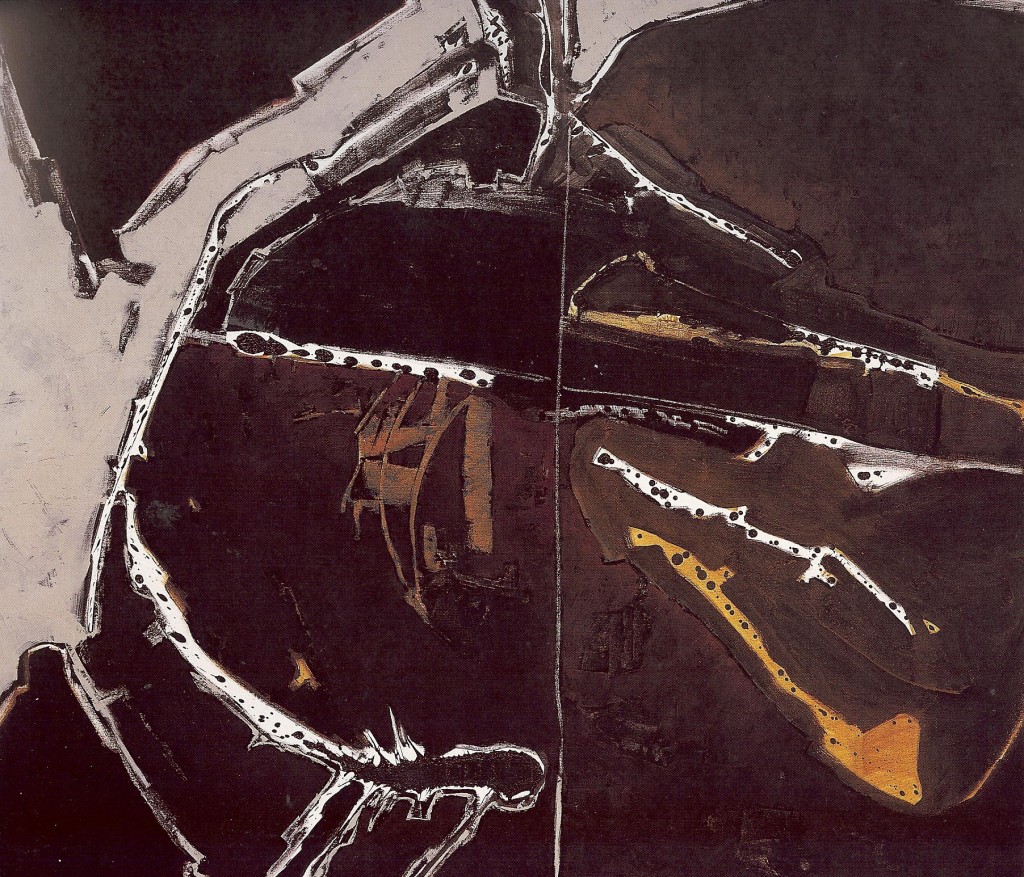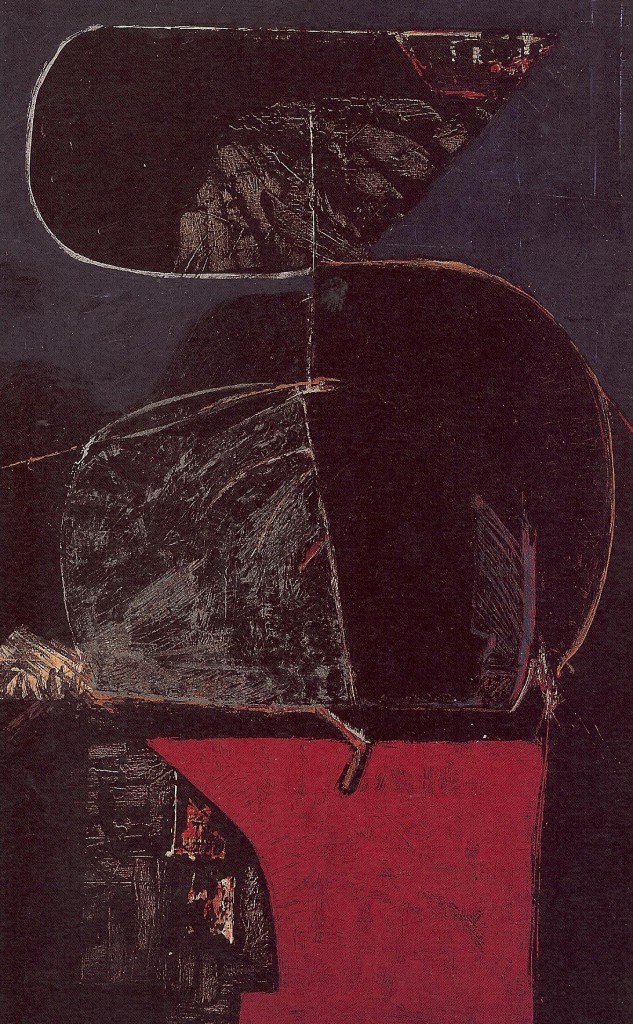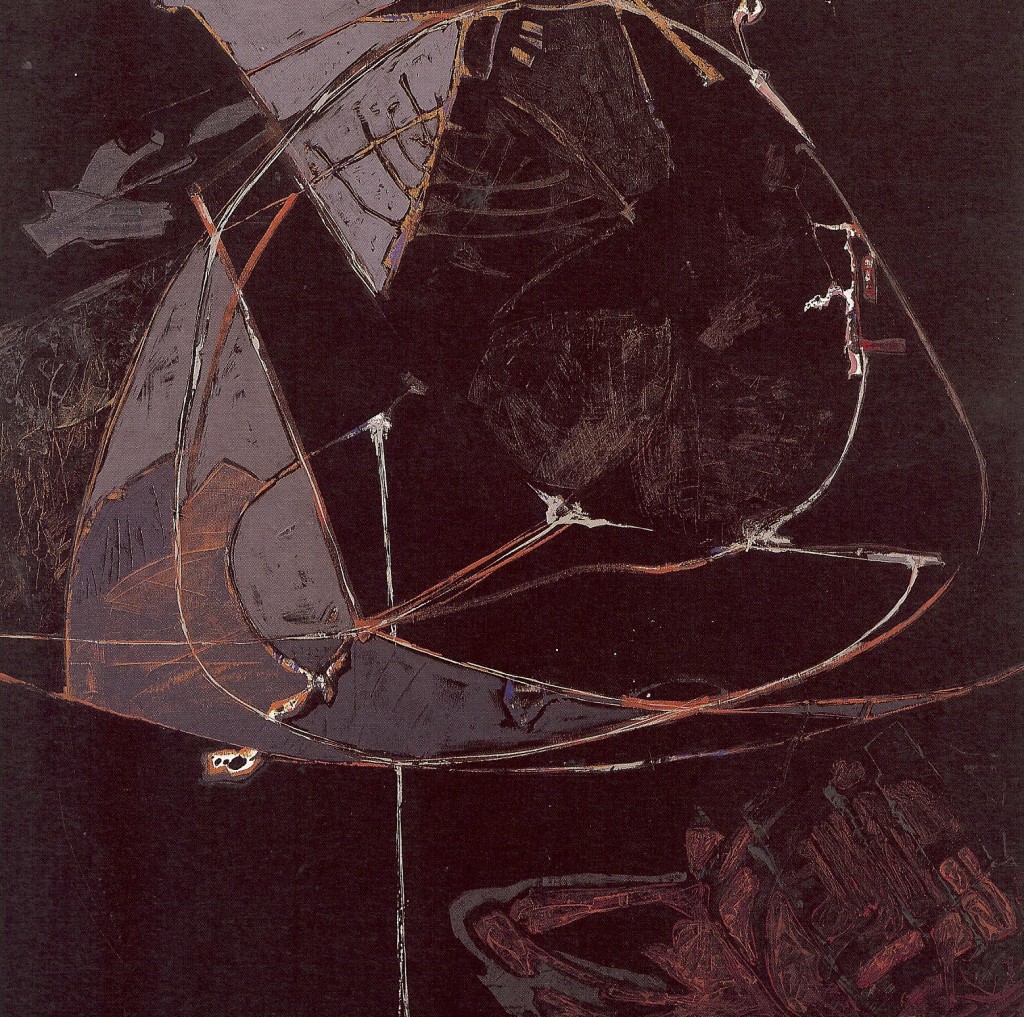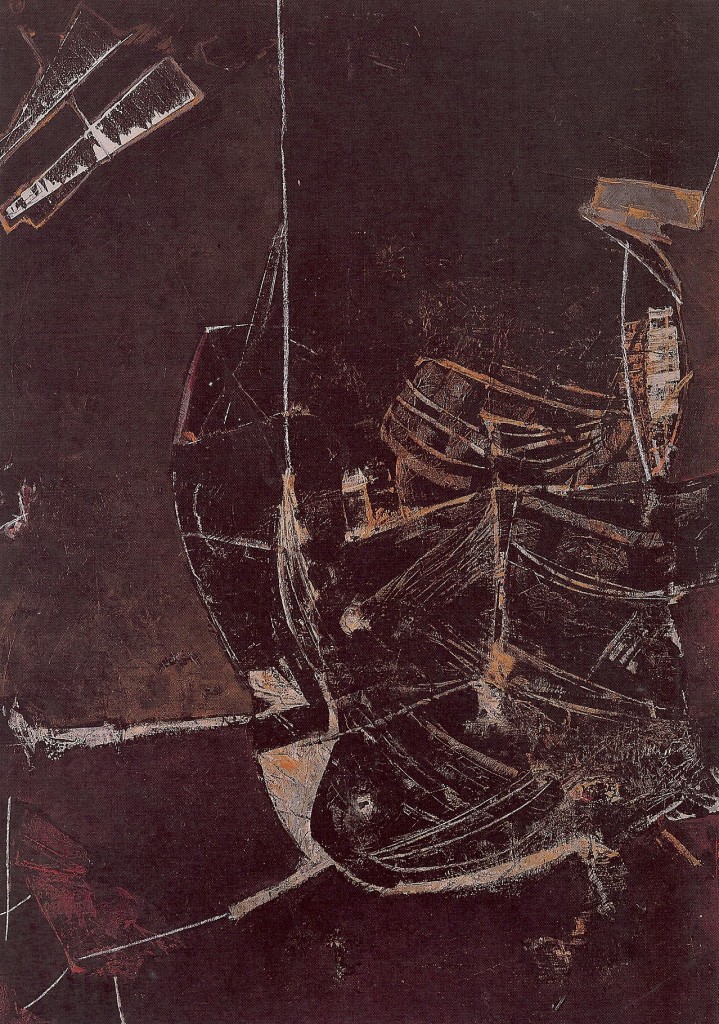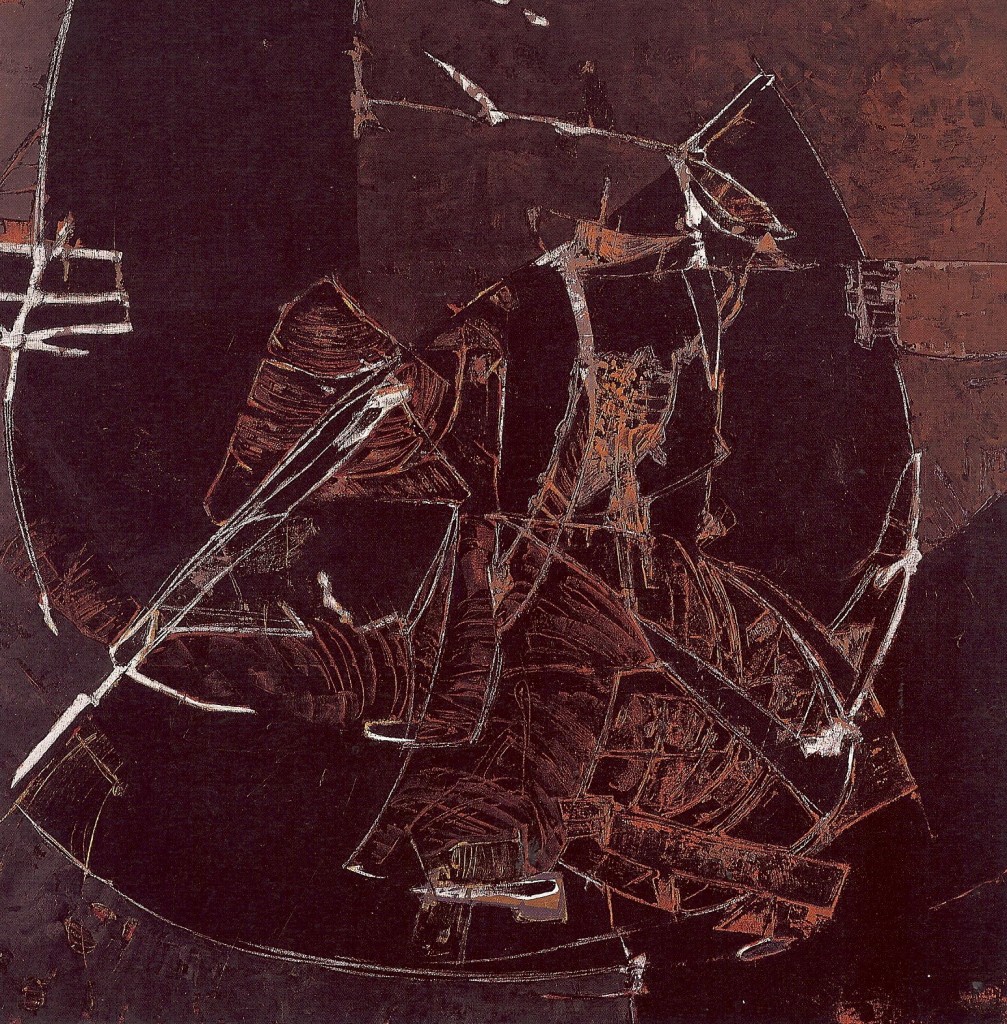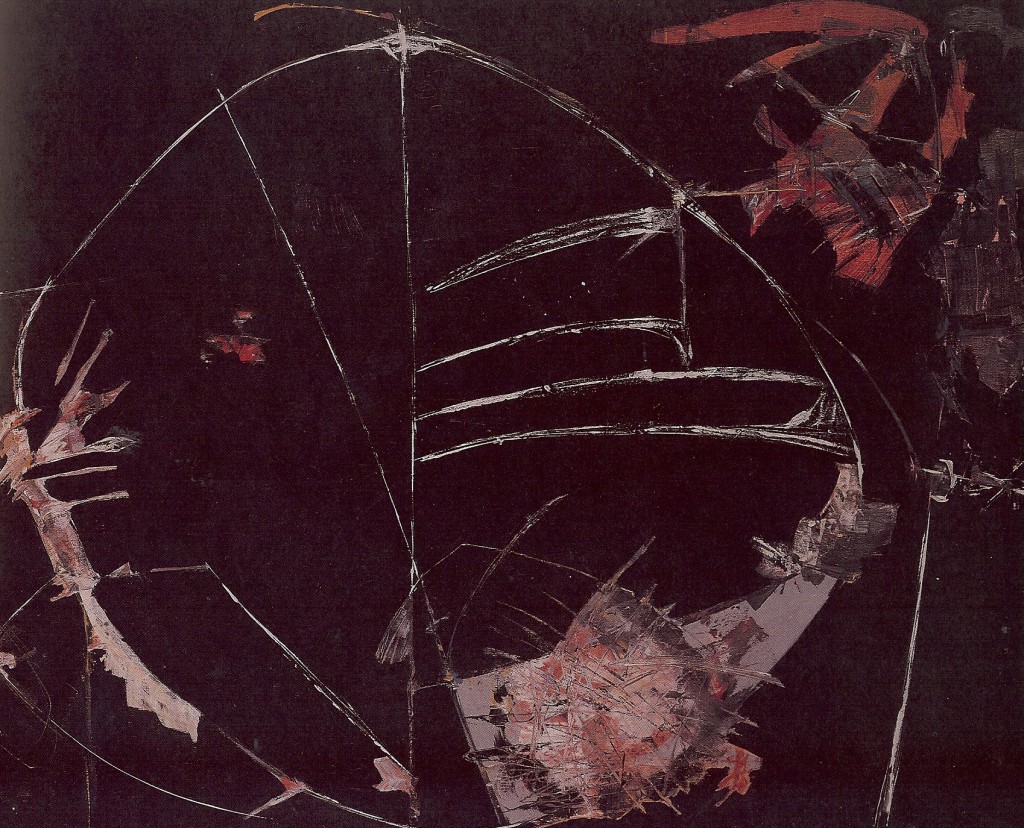The Athenian – April 1994
MARY MACHAS
COSMIC REALMS
Dora Poulmann is preoccupied with space, color, surface texture and motion. Her abstract compositions of scraped surfaces and forms emerging of drifting through a compelling darkness suggest a cosmic space. Planet-like orbs evoke a sense of volume even as they change before our eyes into arcs or ovate shapes.
Poulmann’s palette is dominated by earth colors and black, dark resonant tonalities that unite each canvas and produce mystical atmospheres. Emerging forms and color draw the eye into every surface detail. The pictures are built up with layer upon layer of paint, and the surface darkness is brought to life with color within color, light within shadow. Patches of color are stroked or scraped into seductive patterns of delicate line and texture.
“Opening / Entry” is a triptych viewed from right to left. Throughout the entire composition, black moves in and around solid shapes drawing the eye along its snakelike path. Another triptych entitled “The Three Meanings of Basic Elements” (motion, composition, color) has an unusual format, with one large panel dominating two smaller ones below. The three paintings are separated by wall space yet are united by recurring motifs.
Circular shapes figure prominently in most of the paintings. In “Simple Rotation” the shape appears as an open curve, a segment of a circle, while in “Balance” it becomes elongated, reshaped by the energy of linear rhythms. Solemnity and quietude envelop these paintings. Their contemplative imagery beckons, holds the viewer’s eye and engages his emotions.
A graduate of the Athens School of Fine Arts, Poulmann was a student of Yannis Moralis. She also studied stage and costume design in England at the Croydon School of Art. This is her second one-person show.
ΝΕLLΙ MISSIRLI
Art Historian
DORA PULMANN
There is no figurative element in Pulmann's art that directly relates to visible reality. However, it invites spontaneity, emotion and enthrallment. The initial approach to the artist's work is by way of an austere dark background, which is, at the same time, practicable and accessible, and allows for outlets, passages and a play of light, all of which represent countless threads of delusion. Ιπ the abyss shine colorfulness -thin, sensitive and scintillating- which lead unto larger spaces of intense coloration and freer forms. Among these vividly blue, red and yellow spots, which reveal themselves after a certain development, the spectator feels liberated, aesthetically justified, and in full accord with the newly-created atmosphere. The latter stems from feeling and, having severed its ties with the mundane, leads up to the dream and the sought-after personal visual experience. Thus, joy and hope develop concurrently. It is a question of exploiting an innate map which is not subject to, anguish, but flutterings, expectations and amusement, both intellectual and aesthetic; for the chromatic technique varies, and the shapes result in contrasts, pauses, suspense and relaxation. Where a tiny light leads is akin to the blending of the outer and inner worlds with what unexpectedly occurs and evolves. The need arises for something to transgress the stirring events of everydayness. Then again one can adhere to a reverse procedure. Α chromatic condition attracts him vis-a-vis action and aesthetics, which constitutes the point of departure. Interpretation is multifarious, depending on the symbols that one sees, the way one associates them, and subject to one's disposition. One thing is certain though, Pulmann's work acts as a respite: it is art for art's sake and the aesthetics thereof; as such, one encounters it with more freedom, more sensitivity and emotion. Even her messages are mere allusions, which allow for detachment from conventional and predetermined notions. They provide for complete freedom of thought, a condition of joy and delight.


